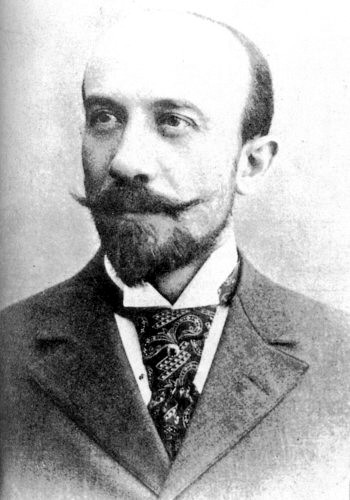A Guide To Georges Méliès: The First Cinemagician

Georges Méliès was an early silent film pioneer from France during the late 1800s and early 1900s he made some of the most prolific films the world had seen. To this day his films continue to inspire directors and film enthusiasts alike. Méliès made over 500 films in the couple decades he was active and used amazing methods of timelapse, stop-motion, hand-colored film and other camera tricks in his films. Much of his subject matter was fantasy, science fiction and occasionally horror in nature. His films have been used in pop-culture and referenced in music videos and even major films.
Before Méliès was a film maker he was a stage magician. He would always make attempts to carry the magic to greater and greater lengths to give the watcher that much more entertainment. Eventually this is what attracted him to creating films. When he saw a screening of a film by the Lumiere Brothers he offered them a large sum for one of their cameras. After they refused he managed to get a prototype from an inventor in England. He began filming in 1896 and screened his films at the Théâtre Robert-Houdin. Some of his films combined stage magic and others very fantastical elements. At the time it was an incredible combination as many in Paris flocked to see not just the new technology in action but also the great films of Méliès. A year after he began filming he created the film company Star Films. To the side you can see the his first horror film The Haunted Castle and below the fantasy/sci-fi film The Astronomers Dream. Click on either one to watch them.
As Méliès progressed in his film career his films saw regular playing in Paris and his studio was constantly seeing filming for one scene or another. This drew a lot of the Paris populace to be part of his films, actors and extras flocked to his studio on a daily basis. Méliès himself acted in his films either sometimes in costume sometimes not. He began to draw on the classics for inspiration and spent a lot of time coming up with scripts, elaborate creatures and monsters and sets as most of his films followed a stage play like format. During this time his film trickery intensified as he experimented with stop-motion, timelapse and began having his films hand-colored frame by frame to give them an amazing looking color. In 1902 Méliès made the film that would make him world renown, A Trip to the Moon, based on a Jules Verne classic from the Earth To Moon. Click the film below to watch it.
Méliès would continue to make films and enhance his sets, monsters and create more and more amazing scripts and recreate many great classics. In 1907 Thomas Edison with the support of most of the large film companies created the Motion Picture Patents Company in an attempt to control the film industry and set himself up as president. This came as an early attempt by Edison to patent the film camera to make it impossible for others to create a camera or make their own films. The Motion Picture Patents Company made it almost impossible to have create and have films distributed. So in 1910 he had to sign a deal with Pathé Frères one of the Edison supporting larger distributors to have his films seen. This deal would be his undoing. Click to watch the film, Inventor Crazybrains and His Wonderful Airship (1906) to the right and below, Sleeping Beauty (1908).
The deal Méliès made with Pathé Frères gave Méliès their financial backing and he was able to continued to make films. However Pathé Frères gained the deed to his studio, his home and retained the right to edit his films if they wanted. Over the next few years Méliès put a lot of money into his films and eventually encountered money problems.
In 1913 he also began a major feud with Pathé Frères who began to drastically edit his films taking away his creative control. After Méliès refused to make more films for them they sued him. Although they were unable to take his studio and home due to legal technicalities brought on by World War I they were legally allowed to take possession of his studio after the war was over. As they had the deed of his home and studio they set posed to take not just that but all his sets, props and his film reels which were property of the film studio.
In a rage and not wanting Pathé Frères to take all of his life work one night he burned most of the negatives, props and film sets stored at his studio. Which is why today a large number of his films are lost.
The 1920s was a horrible time for France and the European economy in general as they were rebuilding after the war. With little left to his name Georges Méliès, who once had his films viewed around the world, was reduced to making a living as a street vendor selling candy and toys in the Montparnasse railway station in Paris. Eventually in 1932 he was recognized by the city of Paris he was allowed to retire at La Maison du Retrait du Cinéma a film industry retirement home. He died in 1938. These later years are somewhat chronicled in the Martin Scorsese film Hugo (2011). I recommend to anyone viewing to check out this film.
Also if this article has peaked your interest check out this playlist of many of Georges Méliès films: http://www.youtube.com/watch?v=vCmXTlCi7D4&list=PLB49B9F437E98973B&feature=plpp_play_all
If you want to forward this article to others I encourage it. Use the facebook, twitter or Google+1, link at the top of the page or click the share button at the bottom of the page for other social networks. Someone you know may find this of interest.








